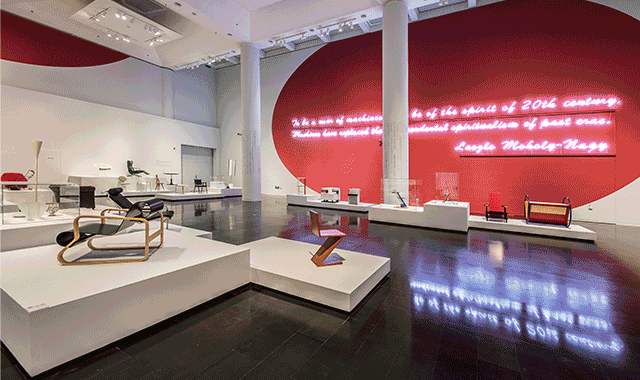
How can everyday objects like furniture be connected with the theme of “Utopia,” this seems to be remote and dreamy? “Design Utopia 1880-1980: 100 Years of Design History / The Biagetti-Koenig Collection” offers an answer: by design. The exhibition commenced on June 1 at Tsinghua University Art Museum.
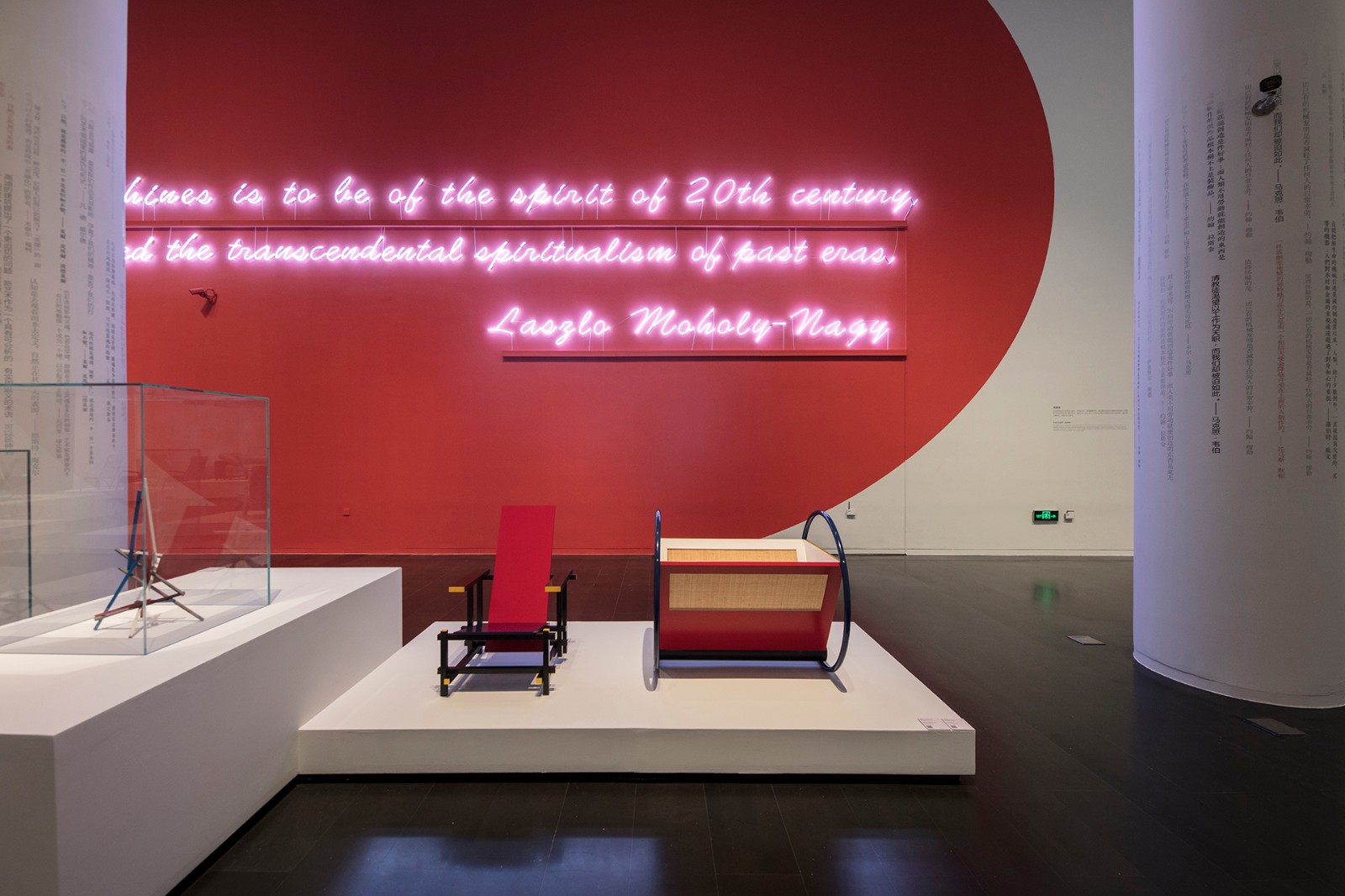
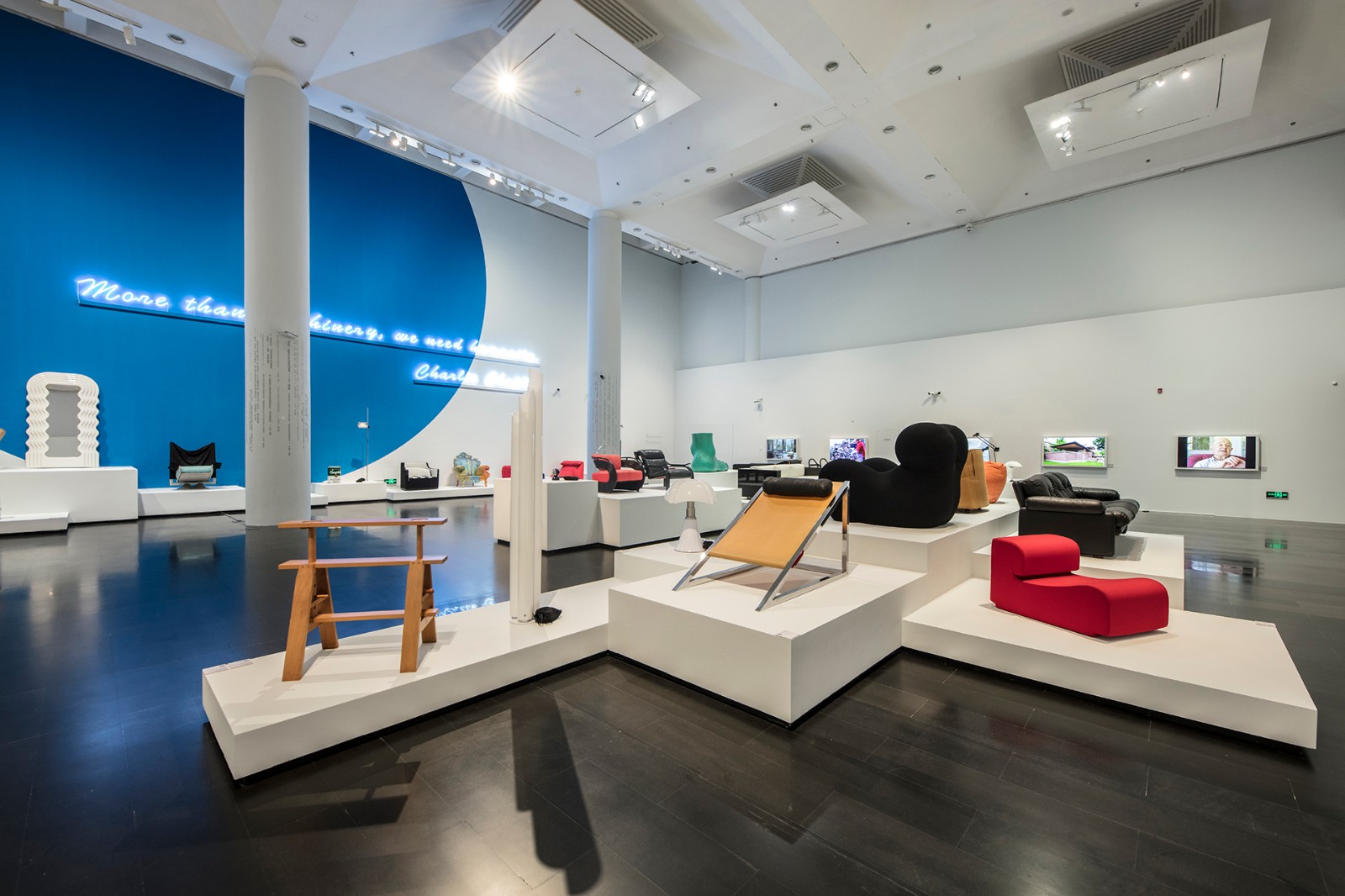
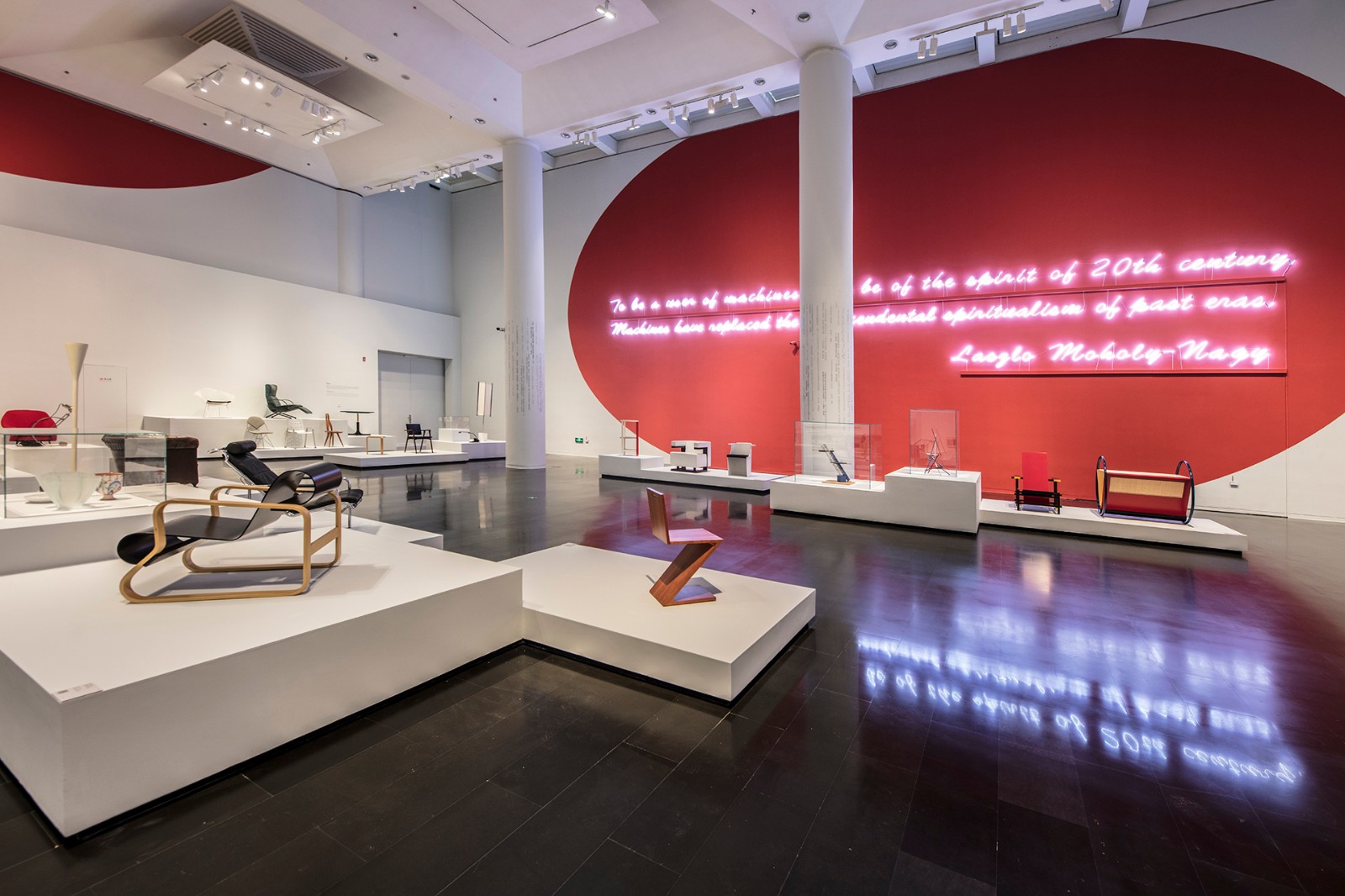
Exhibition View of “Design Utopia 1880-1980”
I. On-site: A Visual History of Modern Design
“Design Utopia 1880-1980” was positioned as a design exhibition rather than a furniture exhibition, as the organizers hope that it can promote an exchange and a retrospective on Chinese and Western design art through the profound transformations of modern design over the past century reflected in 158 modern design works. It is the largest modern design exhibition that has been held in Asia to date. Most of the exhibits are furniture designed by leading figures in the history of modern design, including Charles Rennie Mackintosh, Antonio Gaudi, and Adolf Loos, Frank Lloyd Wright, Ludwig Mies Van der Rohe, Le Corbusier, Alvar Aalto, Carlo Scarpa, Gio Ponti, Isamu Noguchi, Eero Saarinen, Mario Bellini, Toshiyuki Kita and more. Through spanning the crucial century in the history of design, the exhibition presents the vivid history of the emerging innovations which can be said to constitute a microcosm of the modernist design history.
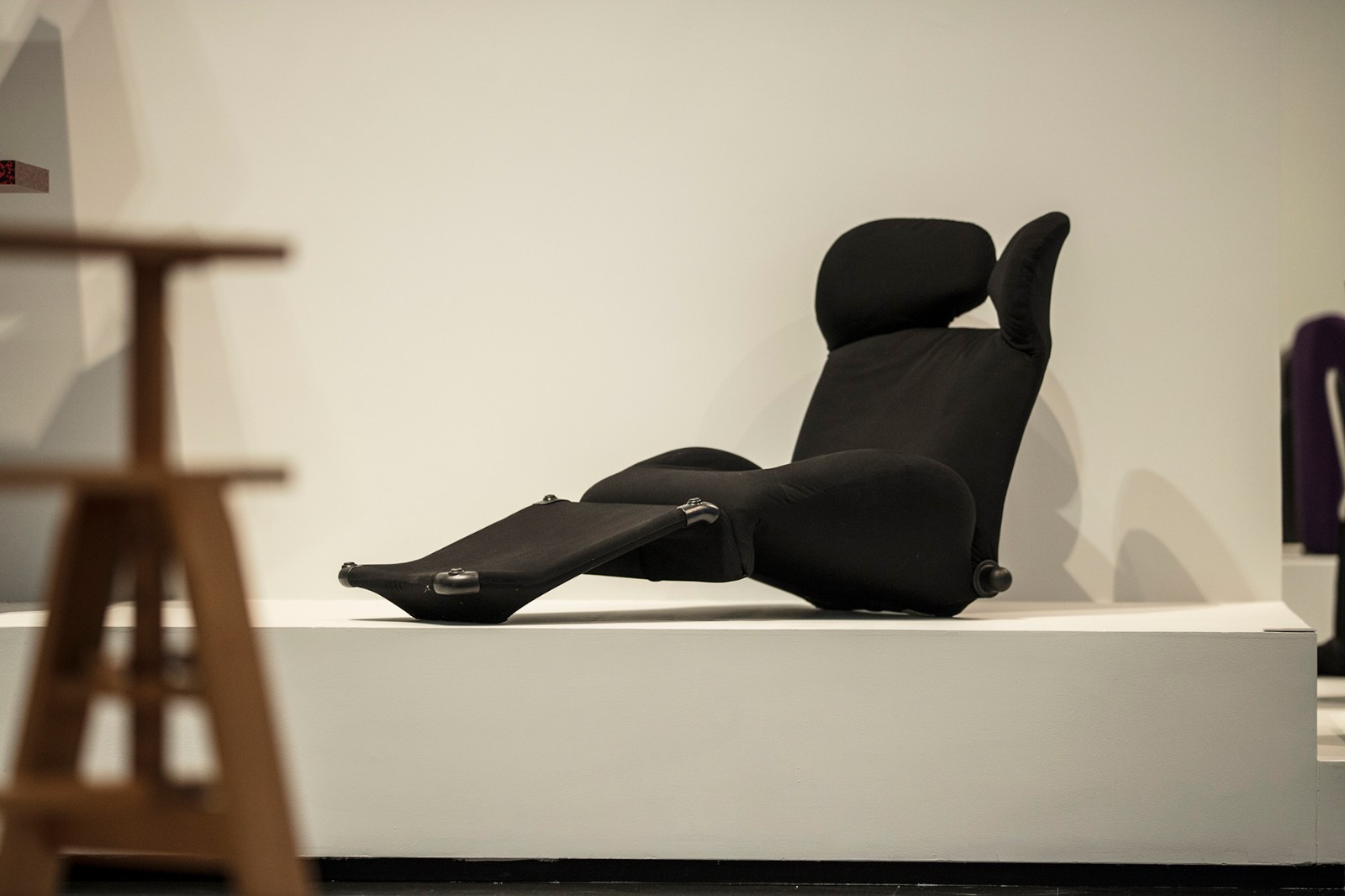
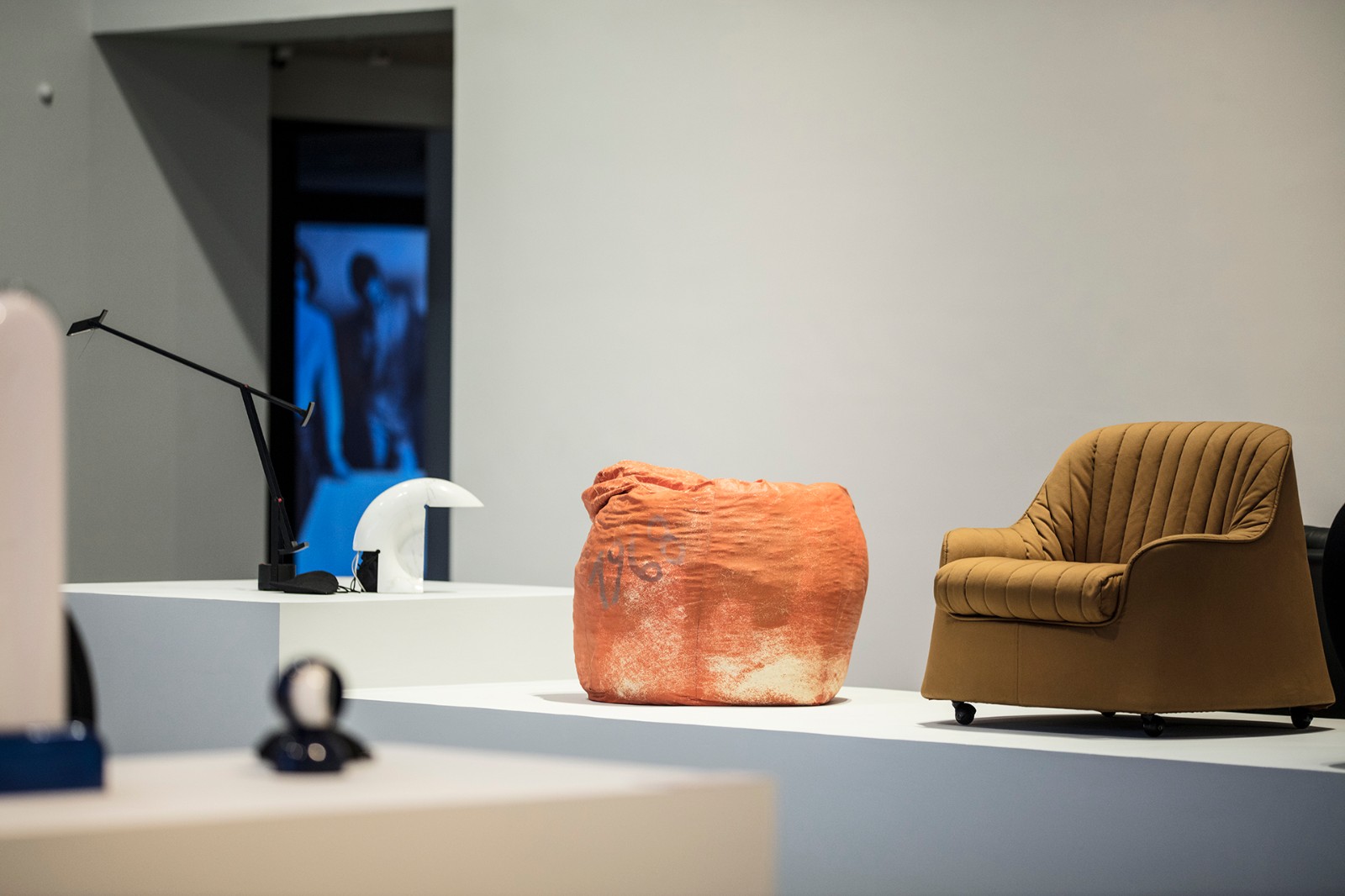
Exhibition View of “Design Utopia 1880-1980”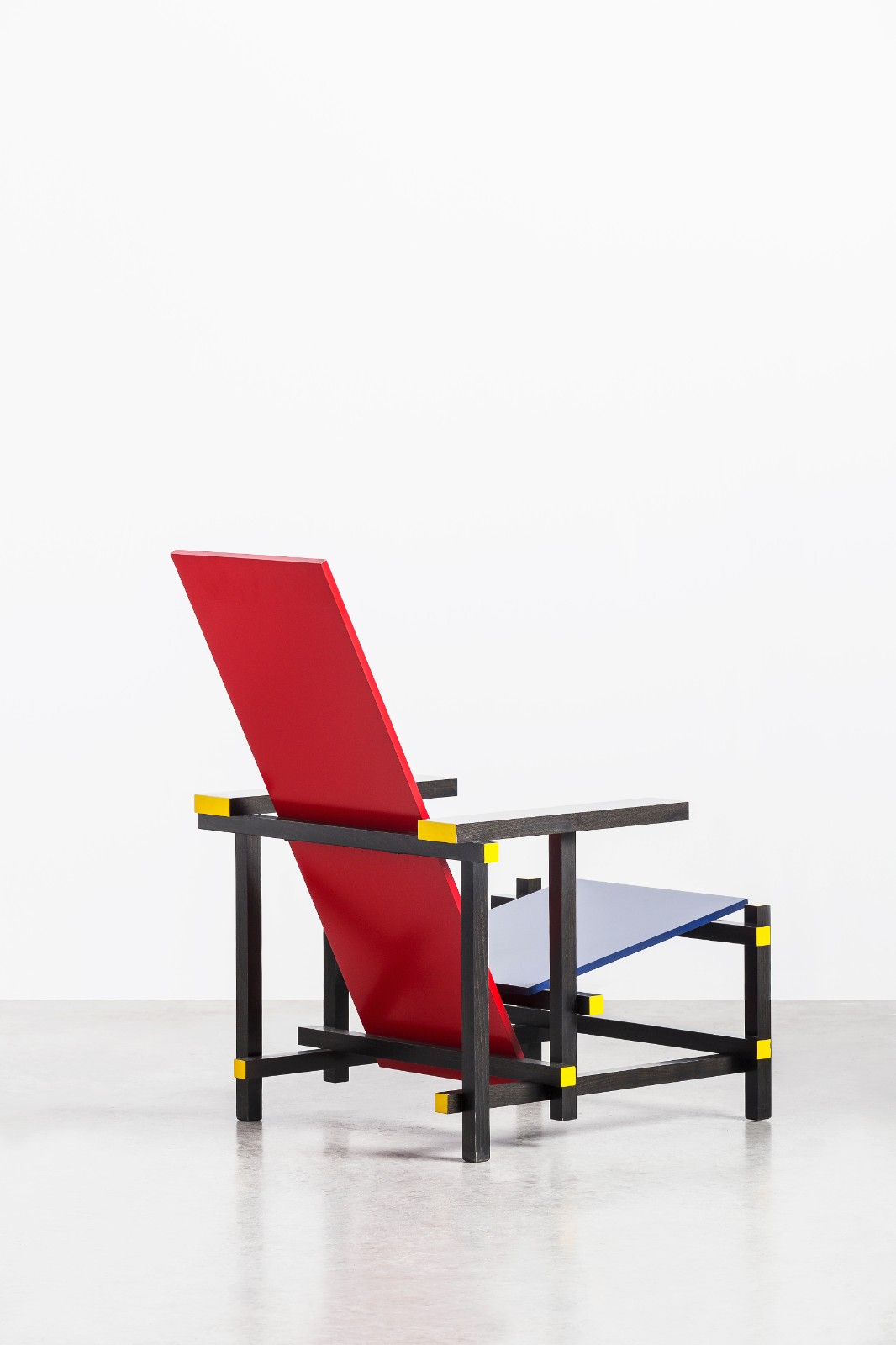 Gerrit Thomas Rietveld, Red and Blue Chair, 1918, 1973 Cassina production, Italy
Gerrit Thomas Rietveld, Red and Blue Chair, 1918, 1973 Cassina production, Italy
The birth of modern design since the 19th century and how it has become an important part of the entire modernist cultural sector, are presented in the first exhibition hall. The works by Art Nouveau architects combine the expressions of architecture and decorative arts; Avant-garde design presents different attitudes such as Constructivism, Suprematism, Futurism, and De Stijl, highlighting the impact of design on thoughts of various “utopias.” The concept of organic design advocates the balance between man and nature... Among the furniture in different shapes and styles, we can observe how design has become an independent discipline from the tradition of art and architecture, and how it has mobilized various cultural fields. The “Red and Blue Chair” by Gerrit Thomas Rietveld intuitively shows its inner connection with Mondrian, which makes us understand that “De Stijl” is not just a movement within the art world; Antoni Gaudi, Frank Lloyd Wright, Ludwig Mies Van der Rohe, Le Corbusier and other master architects’ works show us that there is no absolute boundary between architecture and design.
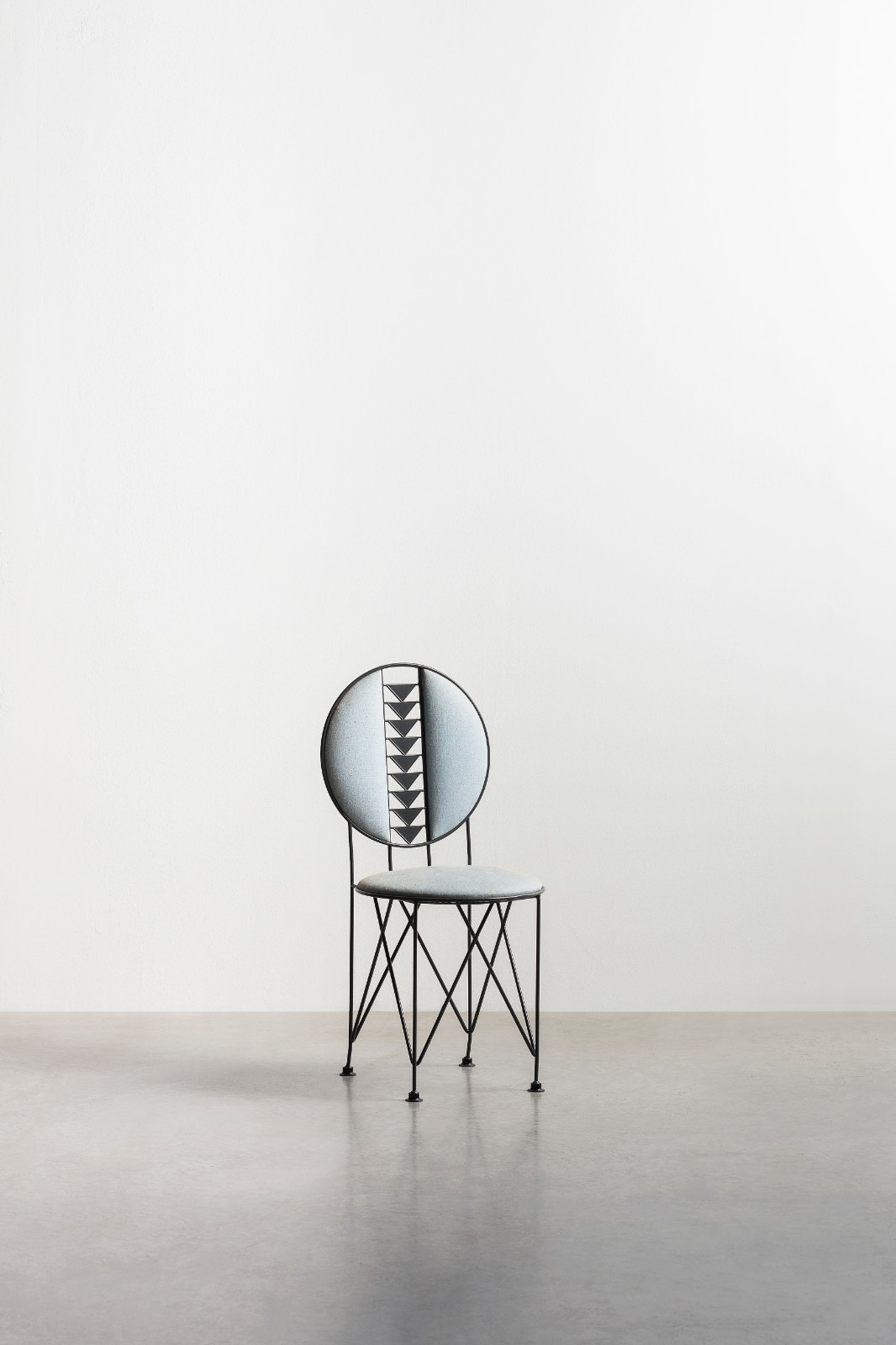
Frank Lloyd Wright, Mod. Midway 2 Chair, 1913, 1986 Cassina production, Italy
The second half of the exhibition focuses on contemporary Italian design. After World War II, the Italian design community devoted itself to the moral and material reconstruction of Italy, and they opened up new horizons in the field of design through a new industrialization programme. The widespread dissemination of artistic experiments and the youth protest movement in the mid-1960s have injected new creativity into the Italian design community and they further interacted with new technology. Among them, “Radical Design” is the prominent representative of this Italian design character. A video on the interview with Alssandro Guerriero who had participated in this movement was screened in the projection room with five threadmills, as Su Dan, the Chinese curator and Deputy Director of the Tsinghua University Art Museum, pointed out that the history of modernism was a history running forward, as if facing the huge energy of machinery and large-scale industrial production, modern design continued to “innovate with shackles”, “the elite do not only focus on the drainage of industrial production, they have also awoken human consciousness hypnotized by the early industrial period with their creative demonstrations.”[1]
Modernism is a vast movement that affects global art and design. The history of modern design is not only a eulogy and prospect on industry, but it is also a criticism and deconstruction of industry. It is its existence that enables the tradition to join hands with modernity, while the rational and the romantic are integrated, which urges the return of human nature.
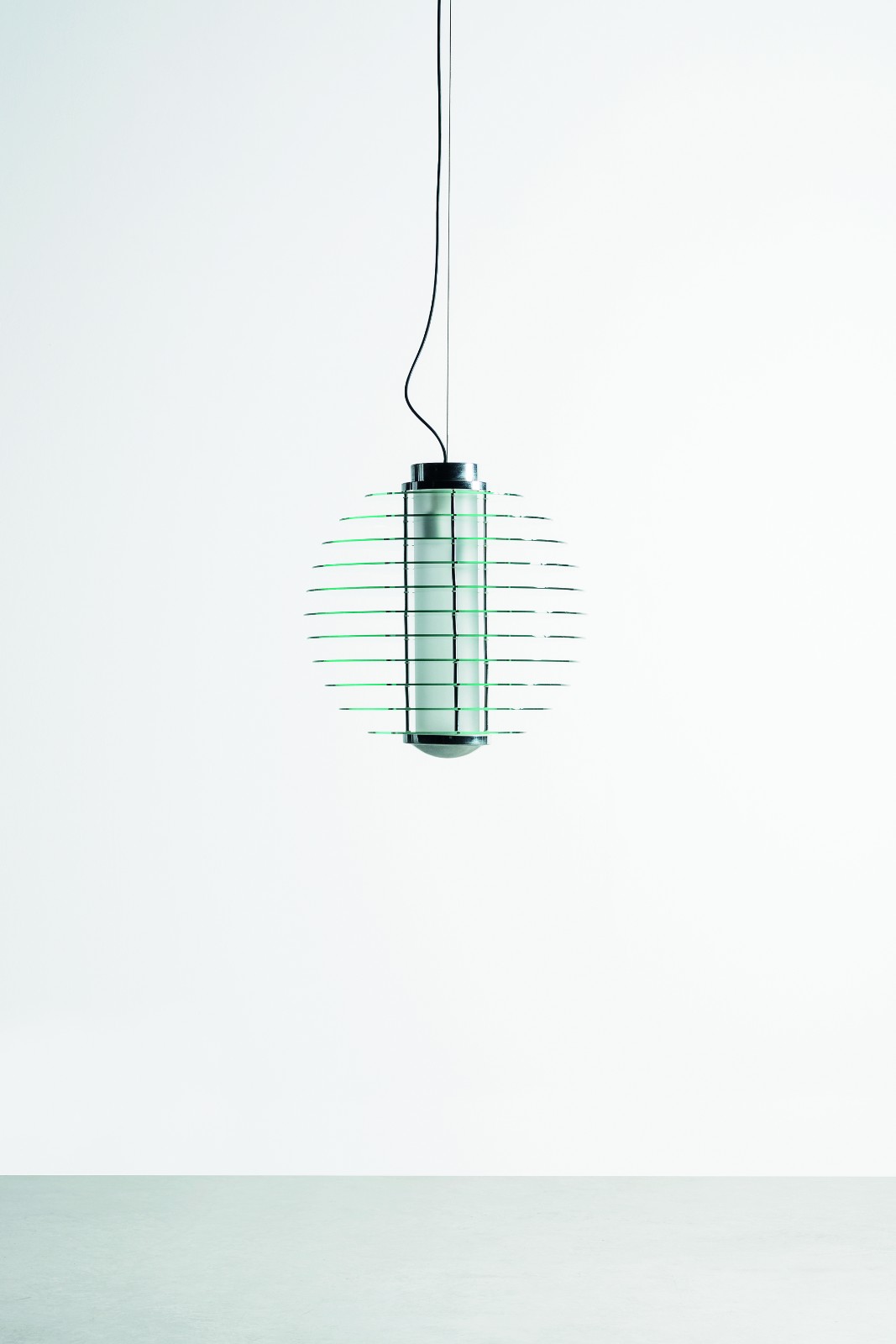
Gio Ponti, OO24 Lamp, 1931, 1980 Fontana Arte, Italy Alvar Aalto, Chair mod. 41 Paimio, 1933, 1975 Artek production, Finland
Alvar Aalto, Chair mod. 41 Paimio, 1933, 1975 Artek production, Finland
Compared with art history, the popularity of the design history among the Chinese public is relatively low. How to present design to the general public is an issue that this exhibition will fix. In this vivid and visual history of design, those who are familiar with the history of design can find the classic design in textbooks gathered in the form of concrete objects in this exhibition, providing them with an opportunity to explore the details of these masterpieces and appreciate the techniques of masters. For viewers who do not understand the field of design, simple exhibition halls and works in various styles may bring pressure for them to understand this concept. Thus the organizers have carefully prepared a QR code for almost every exhibit, which does not only introduce the designer and exhibit information, but it also connects the works by each designer in the exhibition hall to help the audience understand the historical context of their creations. Su Dan, the Chinese curator for this exhibition stated in an interview that the facts of modernity and people’s understanding were diverse. He did not want to show the rigid linear history in the exhibition, but to present the rich diversity of design history in a matrix. When the audience walks into the exhibition hall, they cannot only see various novel and bold ideas, but they can also re-examine the classic design items that have been mass-produced and have spread throughout our daily life. In this way, they can truly experience the charm of modern design. This charm is both historical and present.
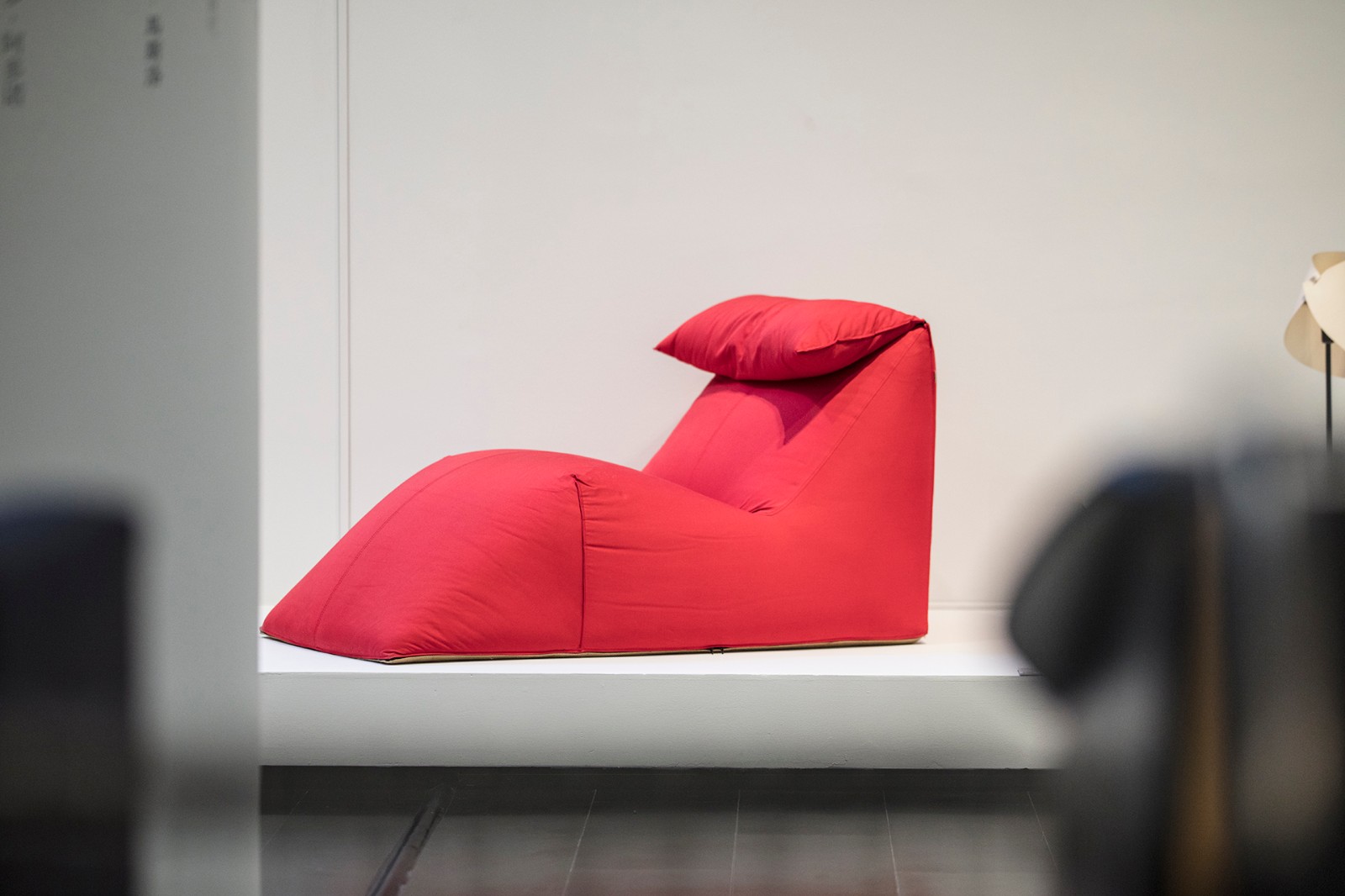
Mario Bellini, Bambolongue, 1972, 1972 B&B production, Italy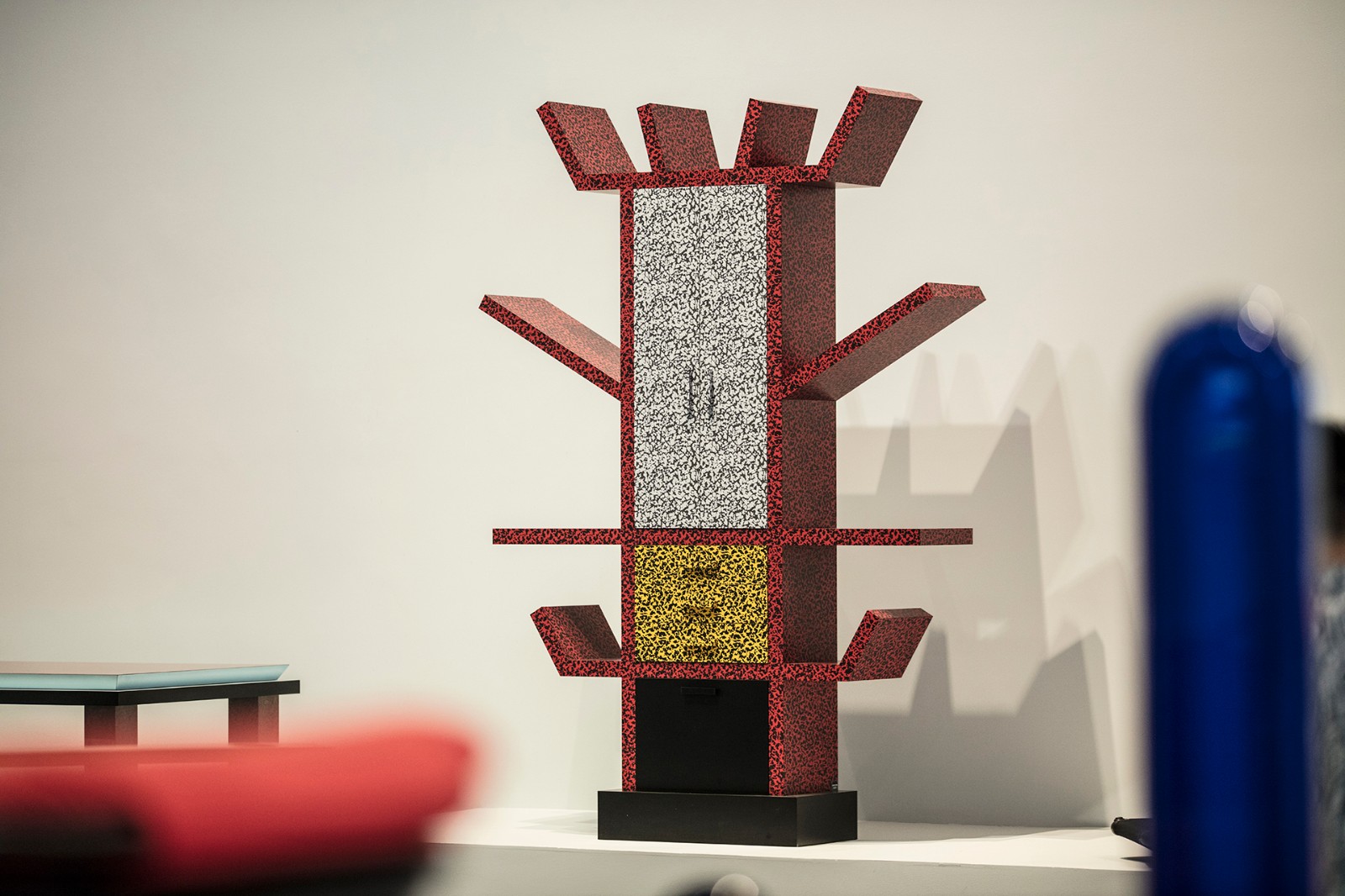 Exhibition View of “Design Utopia 1880-1980”
Exhibition View of “Design Utopia 1880-1980”
II. Seminar: Design Modernity in a Historical Perspective
With the development of modern society, does the coldness of machines conceal the temperature of human nature? Actually, the controversy around the machine production has been thoroughly accompanied by the process of design history. At the same time, modernity has not become a purely historical issue with the receding modernism. At the seminar after the opening ceremony on June 3, with the theme of “Design Modernity in a Historical Perspective”, more than ten experts and scholars from the fields of design and art gathered to discuss four different topics. They re-examined the issue of design modernity within the new global and historical changes, while reviewing and reflecting on the complex and organic interaction between modernist design history and contemporary life culture.
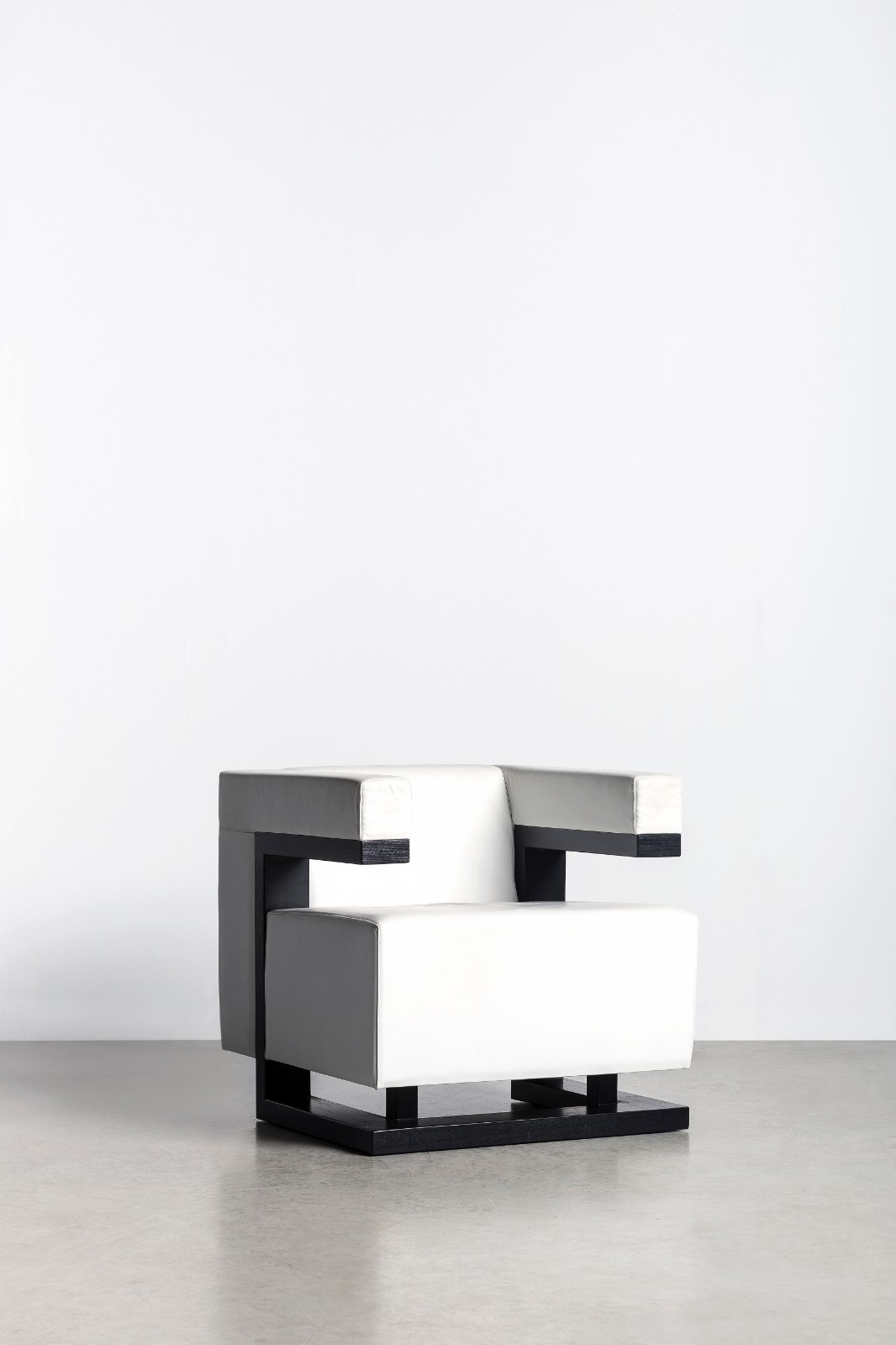
Walter Gropius, Armchair mod. F.51, 1920, 1980 Tecta production, Germany
In the first session of the seminar, “Review and Prospect: the Enlightenment from Design History”, Wang Shouzhi, an expert in design history, highly praised the presentation of the design history in this exhibition, which included not just well-known masters in the industrial age, but also included the Art Nouveau movement and other anti-industrial designs that were not familiar to Chinese audiences. In addition to these, the Memphis Group, which has an important historical value in China, was also introduced in the exhibition. Hang Jian, Director of the Art Museum of China Academy of Art, pointed out that the history of design took two different directions since its inception, namely, focusing on the author’s classic art history perspective and focusing on the designer’s perspective on objects. How then can design history as a young discipline construct itself today? This exhibition provides a concrete context for this reflection.
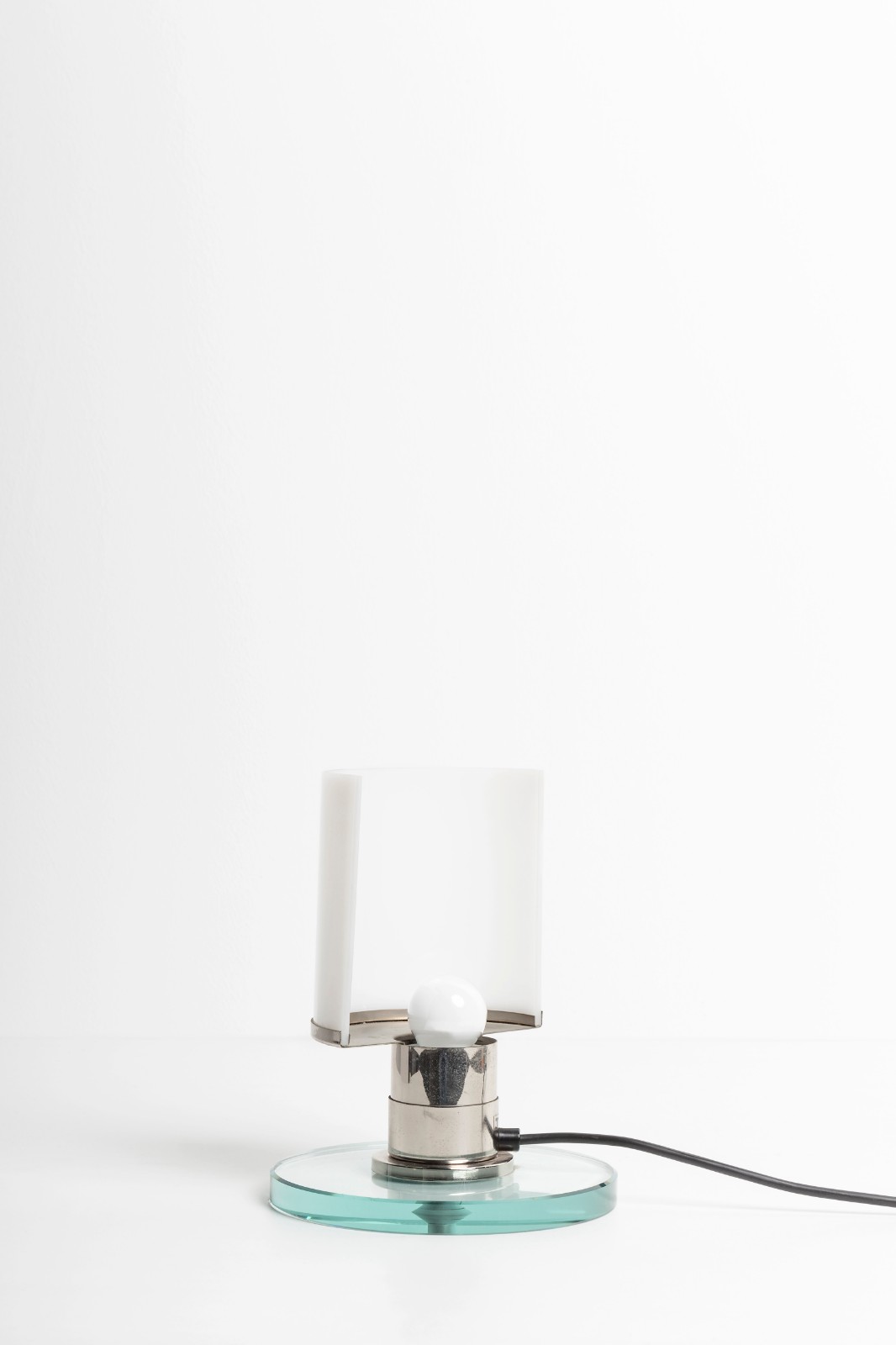
Otto Rittweger, Bauhaus Lamp - L20, 1924, 1980 Tecta production, Germany
The theme for the second session is “Ideal and Reality: Revisiting Design Modernity”. Zhu Qingsheng, a professor at Peking University and President of the CIHA ( Comité International d’Histoire de l’Art), believed that design was also an important theme in art history today. Design history and art history were mutually exclusive and united. Today, images that do not rely on objects pose new challenges to the study of art history and design history. In addition, Zhu Qingsheng also emphasized that “revisiting modernity” means a call to originality. He put forward an example, that compared with the various chairs displayed in the exhibition, there was no chair in the Han Dynasty in China. This allows us to imagine whether chairs may disappear in the future. Therefore, the history of design is both a summary of chairs, and it is also a challenge to chairs.
Zhou Rong, an architectural critic and associate professor at the School of Architecture of Tsinghua University, pointed out that “utopia” is one of the important characteristics of modernity. Utopia represents the desire of mankind to cut off the shackles from the past and create a new future, thus design becomes a tool that they can use to realize this impossible dream. Design means to create a new system, which has a goal beyond the scope of art. Zhou Rong divides the exhibits into antiques, fossils and creations. A review from a sociological perspective ensures that these chairs provide important memories, not just because of their forms, but also their knowledge in creating a new world.
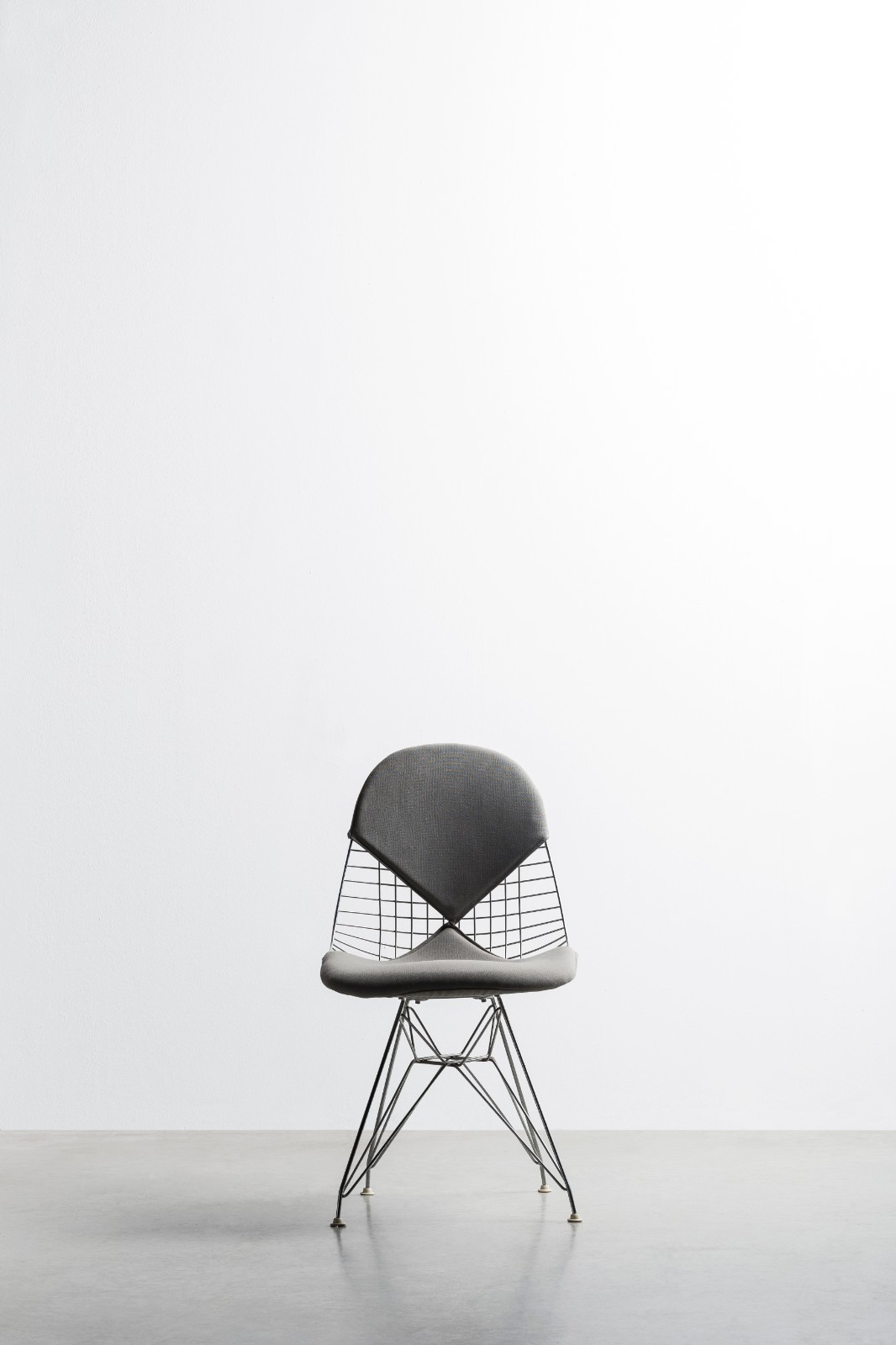
Charles & Ray Eames, Wire Chair, 1951, 1970 ICF production, Italy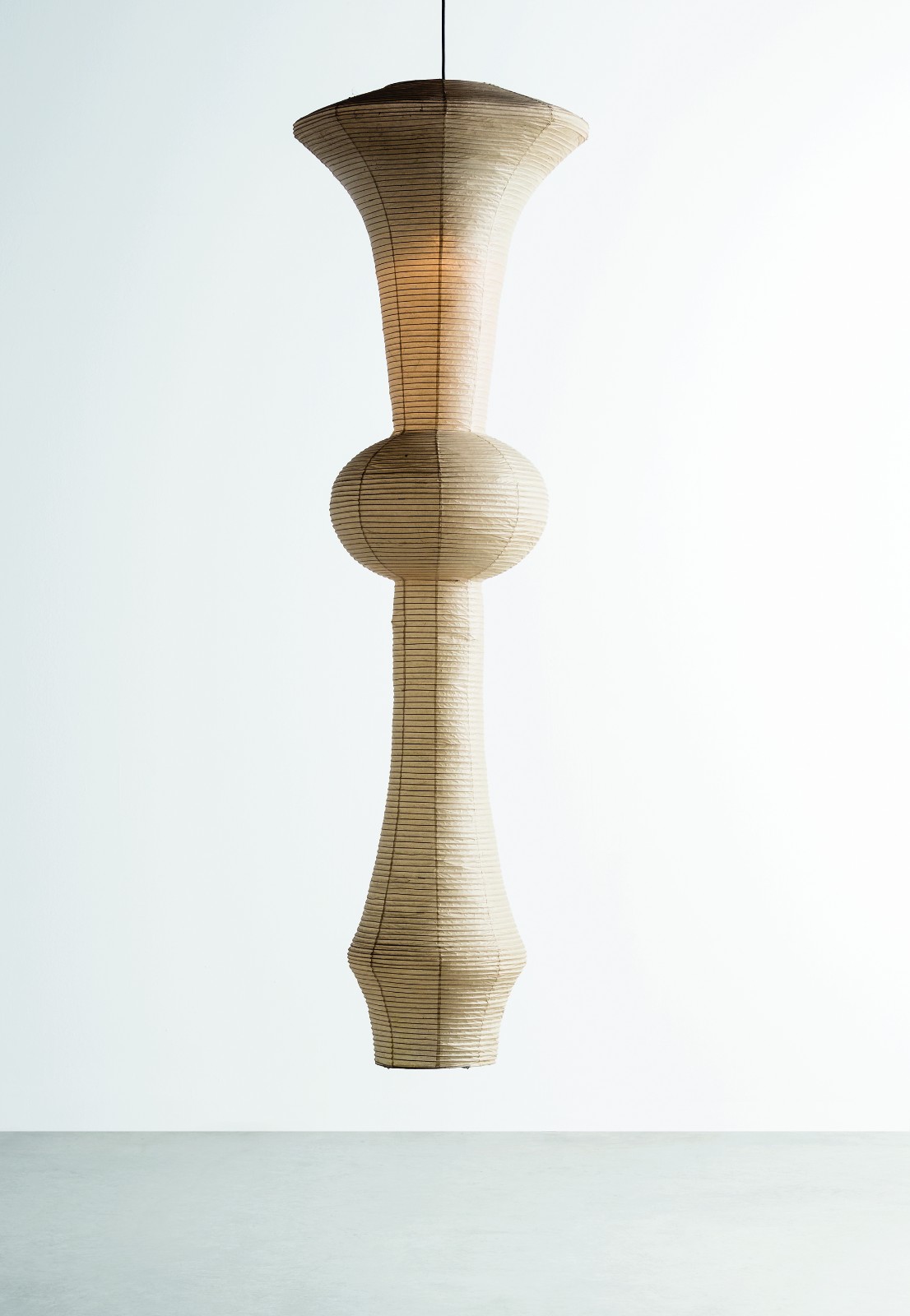 Isamu Noguchi, Akari H, 1951, 1979 Ozeki&Co production, Japan
Isamu Noguchi, Akari H, 1951, 1979 Ozeki&Co production, Japan
In the third session of the discussion on “Problems and Solutions: Alternative Modernity of Design”, Tang Keyang, the Chief Researcher of the Future Laboratory of Tsinghua University, emphasized that the spatial dimension of modernity should be emphasized. He believed that modernity was not a brand-new nature of things. It appeared in the rearrangement of the relationship between things and the world. An authentic design work often involves daily issues such as cost and when the work is placed in a museum, it has the aura of an idol. This contradiction itself is also a characteristic of modernity. When thinking about design and modernity, we should always pay attention to specific characteristics of time and space.
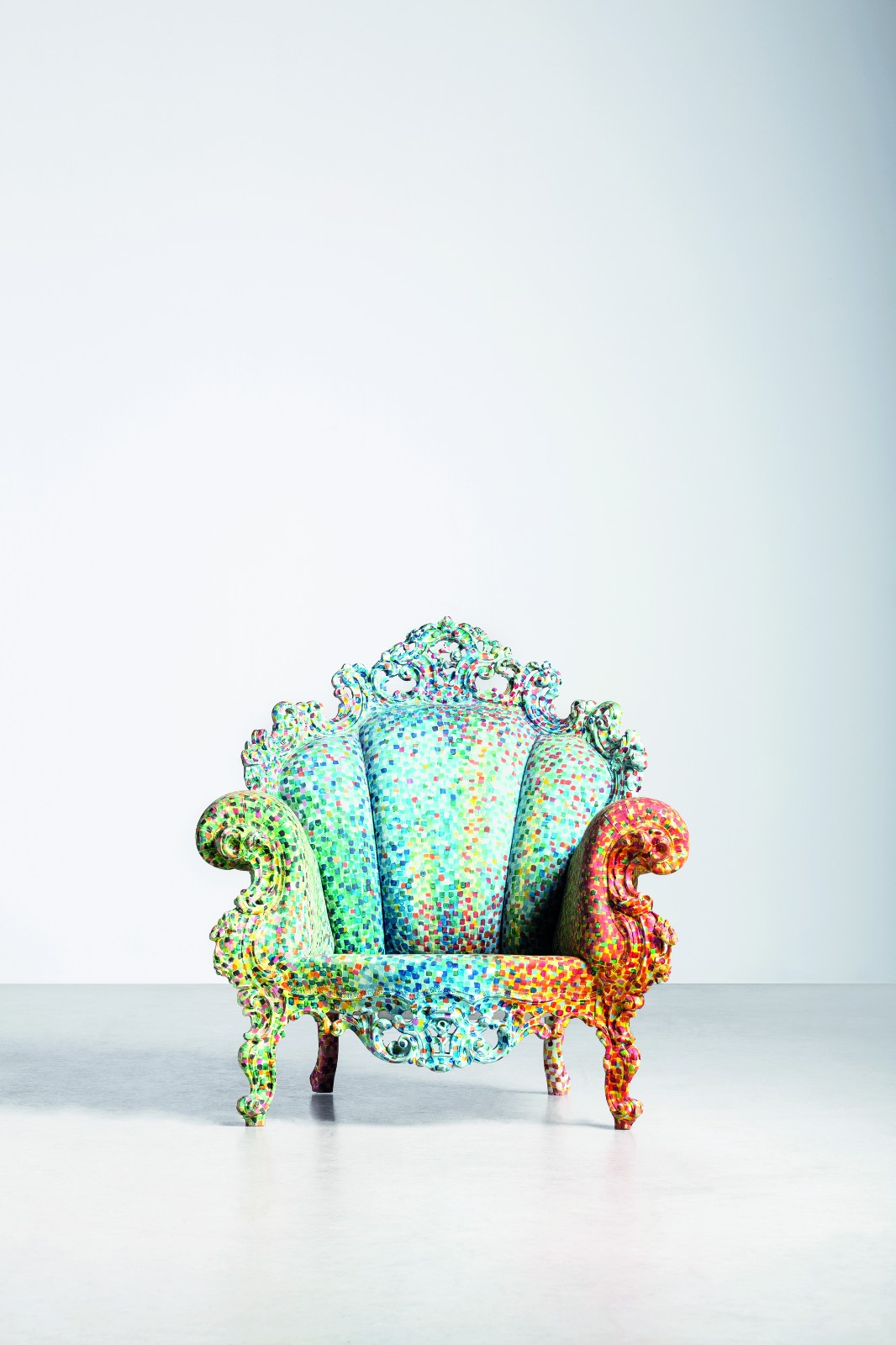
Alessandro Mendini, Proust Armchair, 1979, 1979 Studio Alchimia production, Italy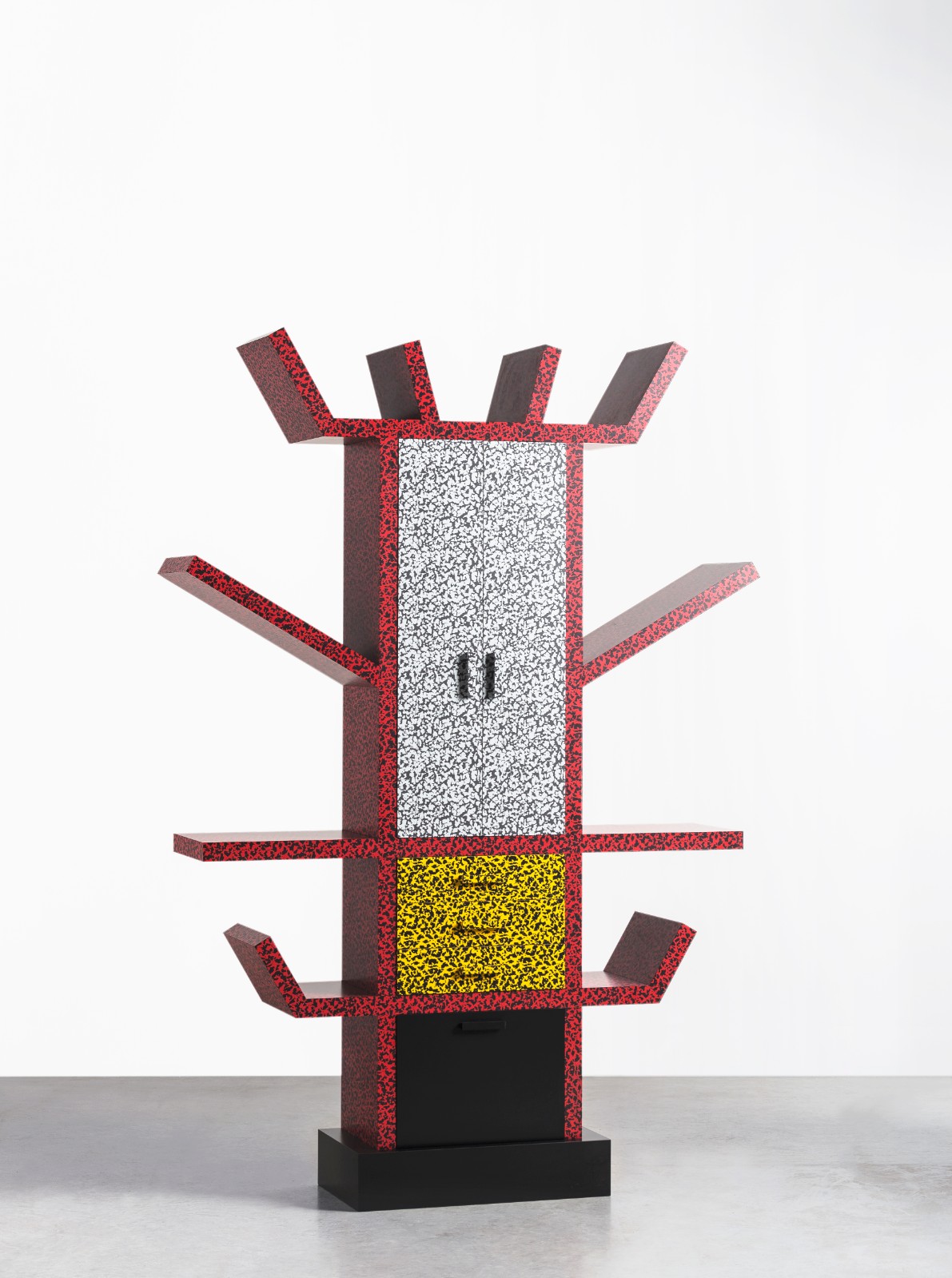 Ettore Sottsass, Casablanca,1980, 1981 Memphis production, Italy
Ettore Sottsass, Casablanca,1980, 1981 Memphis production, Italy
The topic of the last session of discussion on “International and Local: The Future of Chinese Design”. Liu Guanzhong, a senior professor of liberal arts at Tsinghua University and Honorary Vice President of the China Industrial Design Association and Director of the Expert Committee, emphasized in his speech that the purpose of design lies in the people behind the form. The design with Chinese characteristics that we need today is the design of a shared community with a promising future for mankind. With the massive flow of technology, commodities, and capital, in the face of environmental and resource crises, designers must re-examine the purpose and significance of design from the perspective of production relations, and provide Chinese solutions to people all over the world.
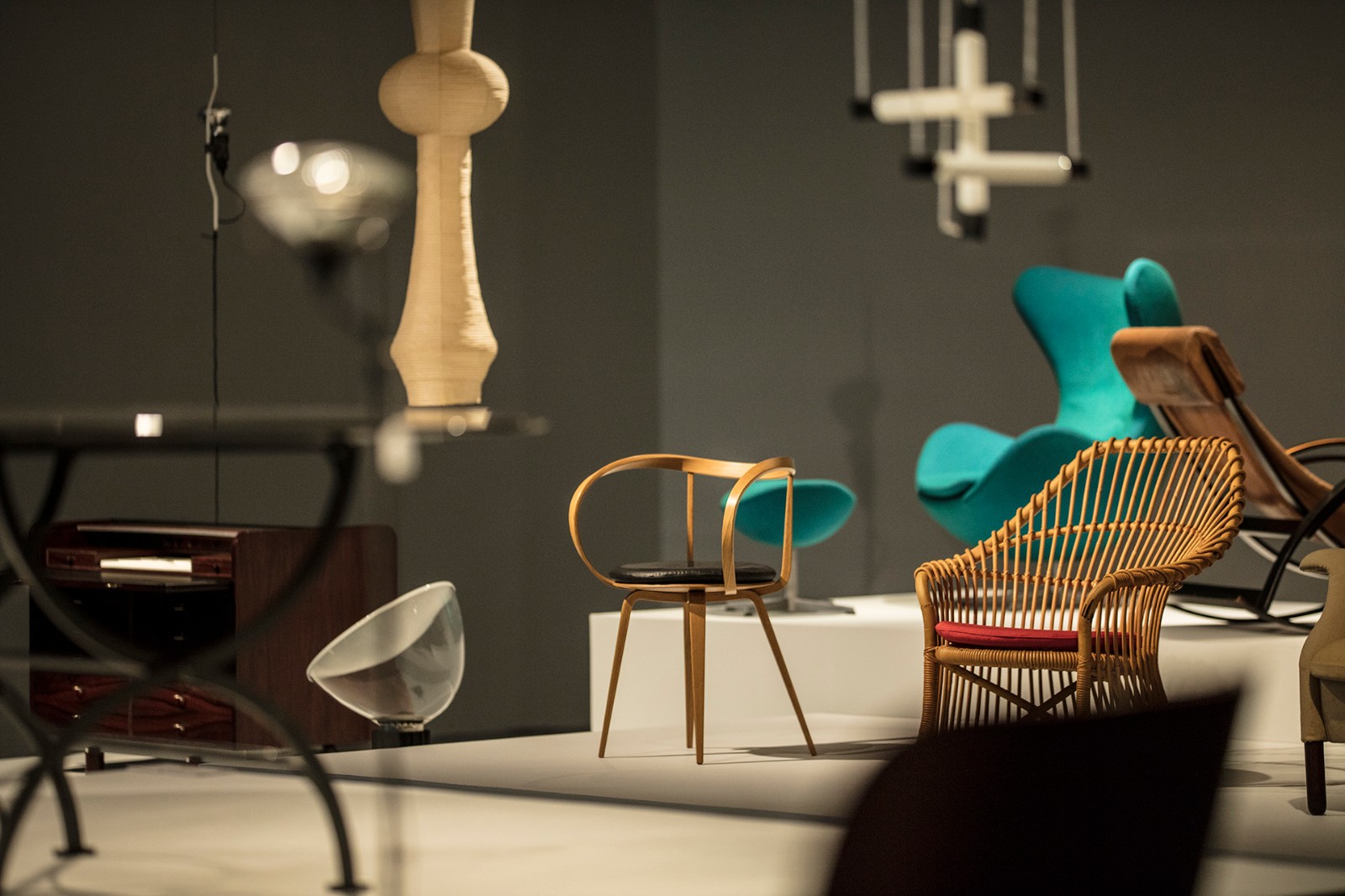
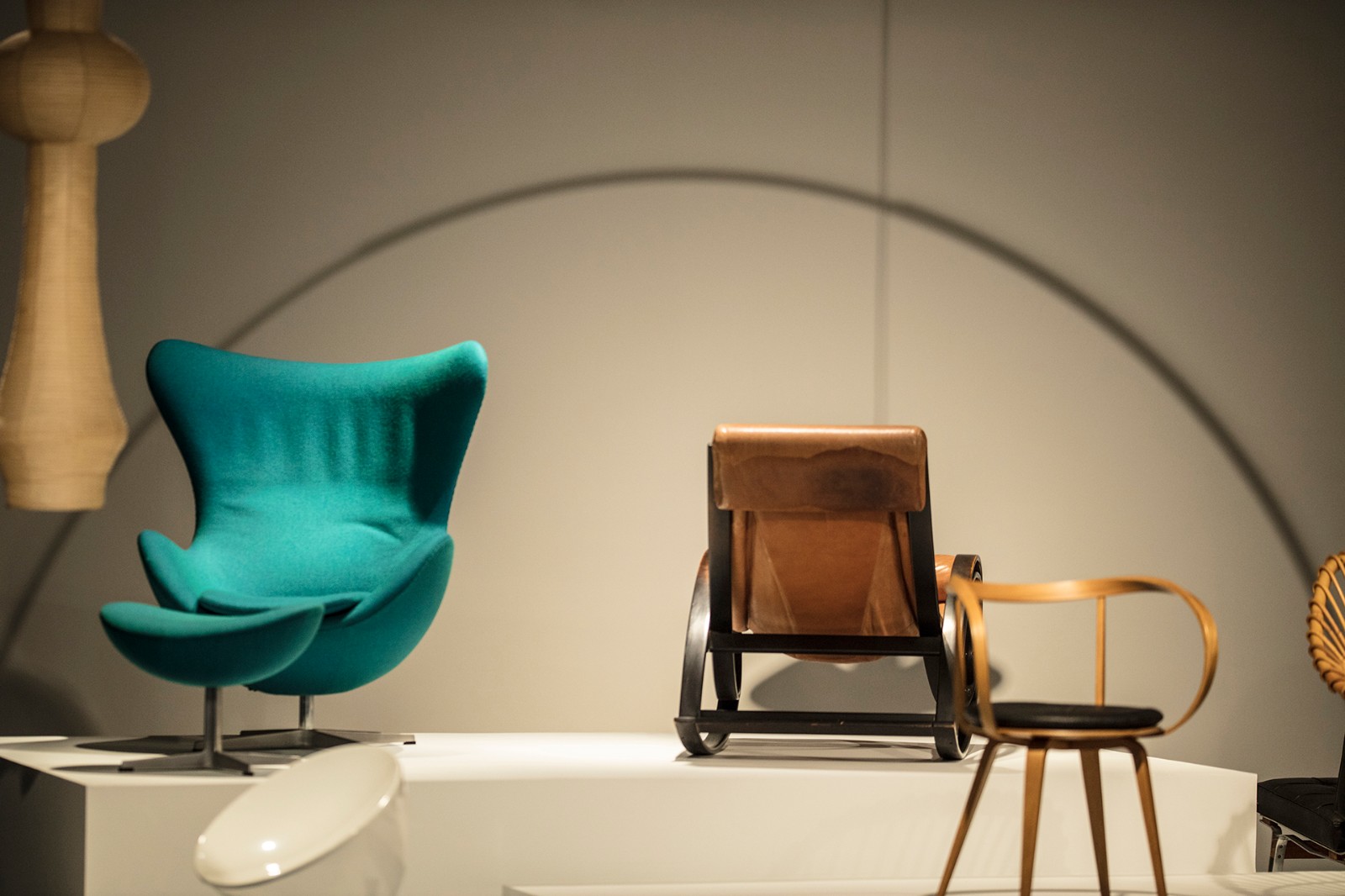
Exhibition View of “Design Utopia 1880-1980”
The Biagetti-Koenig Collection comes from a family that pays attention to modern design and is managed by the Musei Italiani. Their collection spans more than a century and it has accompanied the whole process from the birth, extension and variation of modern design. It took three and a half years from planning to display, and finally it overcame all the obstacles during the pandemic, it was able to usher in these precious historical documents, and present them in the Tsinghua University Art Museum in an enlightening and impressive way. Surrounding these wonderful works, it is not only about the appreciation, praise and intoxication of creations, but it is also composed of analysis, exploration and rediscovery.
It is reported that the exhibition will remain on view in the first floor exhibition hall of the Tsinghua University Art Museum until August 25, 2021.
Text by Luo Yifei, edited and translated by Sue/CAFA ART INFO
Image Courtesy of the Organizers
Note:
[1] Quoted from the Preface for “Design Utopia 1880-1980”

About the exhibition
Exhibition Period: 1 June 2021 - 25 August 2021
Exhibition Venue: 1st Floor Exhibition Hall, Tsinghua University Art Museum
Curators: Alessandro Guerriero, Su Dan
Academic Director: Chen Anying
General Coordinator: Su Dan
Project Coordinators: Wang Chenya, Wang Ying, Ludovica Lencioni
Curatorial Assistants: Ma Yue, Wang Chenya, Wang Ying
Organizers: Tsinghua University Art Museum, Musei Italiani
Support: Embassy of Italy in China
Acknowledgement: Federico Bonadeo, Alberto Biagetti, Alessandra Zucchi, Miao Ran




























